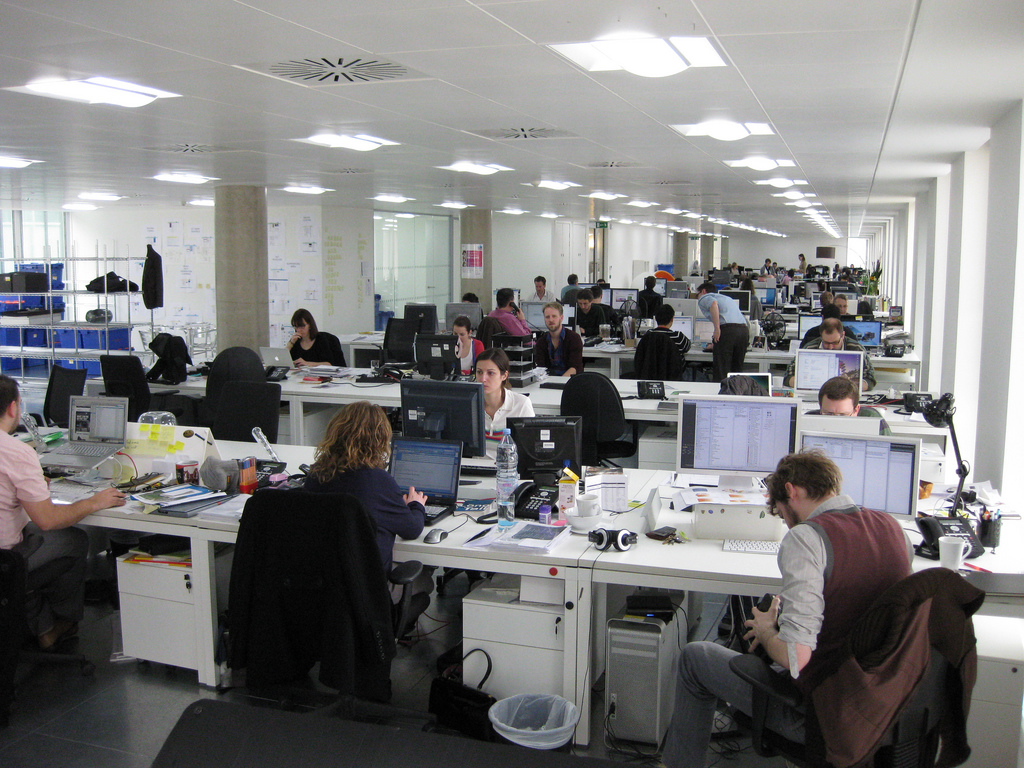 One of the most common innovations in the modern-day workplace is the “open office” concept. In fact, some estimate that nearly 70% of American workers work in an open office now. The emphasis in such a layout is on shared space with very few or no cubicles or personal offices. Advocates say the open office is beneficial to the company and employees, while others are more cautious about the outcomes associated with an open office. This article will explore some of the biggest benefits and drawbacks of an open office workspace.
One of the most common innovations in the modern-day workplace is the “open office” concept. In fact, some estimate that nearly 70% of American workers work in an open office now. The emphasis in such a layout is on shared space with very few or no cubicles or personal offices. Advocates say the open office is beneficial to the company and employees, while others are more cautious about the outcomes associated with an open office. This article will explore some of the biggest benefits and drawbacks of an open office workspace.
Benefits:
Improved Employee Morale
The open office space concept is thought to improve overall worker satisfaction because of the lack of obvious markers of hierarchy. Without the conspicuous evidence of who is more important (i.e. who has an office and who doesn’t), employees tend to have a stronger sense of a shared mission which improves collaboration.
Reduced Costs
One of the most obvious benefits to an employer is that this concept will reduce overhead costs. By eliminating offices, doors, and cubicles, an employer can easily cut down on start-up and maintenance costs, as well as give themselves flexibility for the future.
Allows for More Creativity
Getting rid of the walls, dividers, and doors that isolate individuals in a workspace allows for free and spontaneous sharing of ideas. This often leads to more spontaneity and creativity as workers can more easily express their thoughts to each other and provide instant feedback.
Improves Health of Employees
For anyone who’s lived it, they know that being shut up in an office or a tiny cubicle all day is not exactly glorious. By eliminating excess walls and dividers and allowing more natural light in, an open office plan can drastically improve the mood and health of employees. For many individuals, working in an open office leads to more frequent socializing, which can also be good for your health.
Drawbacks:
Distracts Employees
One of the downsides to an open office plan is that employees are much more easily distracted and that their work is less productive. In fact, one study done by Oxford Economics showed that employees ranked distraction and noise, as a result of the open plan, as one of the biggest factors that inhibited their concentration and work product.
Lack of Privacy
While a lack of doors or walls can lead to a lot of good, it may also make some persons who are more private uncomfortable. This may in fact make them less productive. It can also make it difficult for employees to have legitimate confidential phone calls at work.
Health Risks
Although the “openness” of an open office has some health benefits, it can also make it easier for sicknesses to spread throughout the office. No longer can an employee come in with a minor cold and lock themselves in their office all day to keep from spreading it; if one person comes in sick, it can very well take down the whole team.
May Increase Irritability
An open, shared space can bring out the worst in people, depending on the setup. You know how irritating it is when the person next to you on an airplane takes your entire armrest? That’s how some employees feel in an open office layout as their coworkers constantly encroach on their space. This can lead to unproductive fighting and feelings of animosity among coworkers that can drastically inhibit production.




